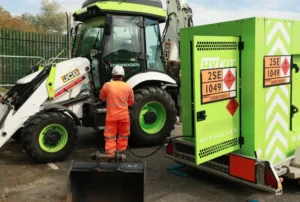Lower Thames Crossing (LTC) has republished its market engagement exercise seeking a low carbon hydrogen supplier for the plant and equipment needed for construction of the £9bn road and tunnel project as its past exercise did not come to a “successful conclusion”.
New Civil Engineer reports that the new market engagement attempt has seen the price of the contract now at a maximum of £80m, whereas it was previously advertised as £50m. Additionally, the amount of hydrogen needed for the project has dropped from 6,200t to 5,900t.
While LTC’s current market engagement exercise is not an official contract it reflects a price range that depends on a number of factors including the price and availability of low carbon hydrogen during the project as well as other variables including amongst other things the availability and prevalence of hydrogen fueled plant and technology, according to LTC.
LTC informed NCE that the estimated total value in a Prior Information Notice gives a price range of the value of opportunity that the market engagement exercise relates to. This range would be narrowed from the current £30M to £80M to a more specific value prior to the start of procurement.
The organisation further confirmed the new price range isn’t solely related to the price of hydrogen but reflects other factors like the infrastructure that might be required to supply and store it as well.
The £9bn LTC project, to which the government has already committed £800m including almost £300m on the development consent order (DCO) application that has not yet been accepted, is a project to reduce congestion on the Dartford Crossing by constructing a tunnel downstream of the Thames Estuary.
The government is now presiding over the DCO decision, with a deadline of 4 October to announce whether it grants permission.
National Highways has designated the new 23km road, which will feature the country’s longest road tunnel, as a carbon neutral construction “pathfinder” project. This means that all procurement for the controversial project will target low carbon construction methods with incentives that drive further continuous carbon reduction. It is to set a benchmark for carbon neutral construction and help the UK reach net zero by 2050.






















